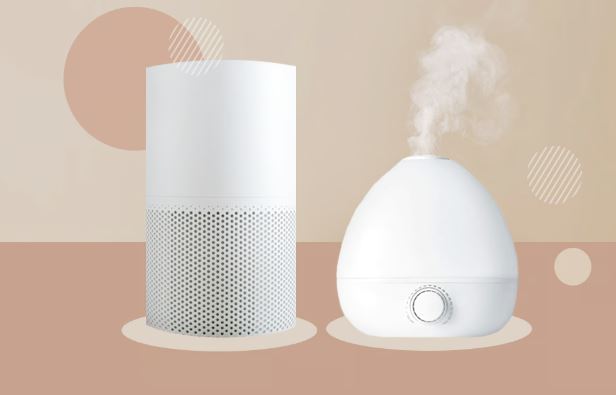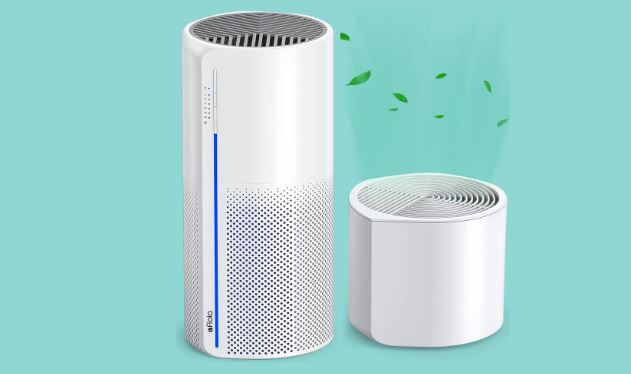The Future of Clean Air: Innovative Air Purification Technologies
Wiki Article
In a health-conscious world, the air we breathe in has taken center stage for many people. With rising pollution levels and a deeper insight of the impacts of indoor air quality on our health, it's no surprise that the demand for air purifiers is on the rise.
Air purifiers are machines that eliminate airborne contaminants in a space, improving indoor air quality. They are especially advantageous for people with allergies, asthma, or other respiratory issues as they can significantly lower the levels of allergens, pollutants, and irritants in the air. Healthy individuals, too can benefit from air purifiers, as they provide reassurance and safeguard against airborne diseases.
This guide will explore in detail the world of air purifiers, discussing the perks they offer, the different types available, crucial aspects to think about when making a purchasing decision, and how to get the most out of your device. By the end, you should have a thorough grasp of air purifiers and be able to make an informed decision about whether investing in one is the smart move for you and your family.

Understanding Air Pollutants and Their Influence on Health
To appreciate the value of air purifiers, it's key to comprehending the variety of contaminants they address and the potential consequences of prolonged exposure.
Indoor air pollutants can be broadly categorized into three primary types:
- Airborne Particles: This includes solid particles and liquid droplets suspended in the air. Examples include dust, smoke, pollen, pet dander, mold spores, and more. Particulate matter can lead to respiratory complications and cause allergic flare-ups.
- Understanding Volatile Organic Compounds: VOCs are gases emitted from various solids or liquids. Sources of VOCs include paints, cleaning products, aerosol sprays, and pesticides. Exposure to VOCs can lead to eye, nose, and throat irritation, headaches, and nausea.
- Biological Contaminants: These include bacteria, viruses, mold, and mildew. They can cause a spectrum of health concerns, from allergy symptoms to more serious health risks.
The effects of these pollutants on human health can greatly vary. For people with respiratory issues or a vulnerable immune system, exposure to indoor air pollutants can lead to serious health issues. For those in good health, long-term exposure to certain pollutants can impact respiratory health and overall well-being over time.

Unraveling Air Purification Technology
Air purifiers use a range of physical and chemical mechanisms to effectively eliminate contaminants. Understanding the basic mechanisms employed by purifiers will help you appreciate their effectiveness and the array of models on the market.
Here are the primary mechanisms and innovations used in air purifiers:
- Mechanical Filtration: This is the most common method used in air purifiers. It involves using filters designed to trap airborne particles as air is drawn into the purifier. The filters can be made from various materials, each designed to target specific particle sizes and types. For example:
- Initial Defense: Pre-filters: These are usually the first line of attack, trapping bigger contaminants like hair and dust.
- HEPA Filtration: Unparalleled Performance: HEPA filters are highly effective at capturing microscopic particles, including pollen, dust mites, and some bacteria and viruses. To be labeled a genuine HEPA filter, it must trap a minimum of 99.97% of particles down to 0.3 microns in size.
- charcoal filtration: These filters are designed to adsorb odors, VOCs, and gaseous pollutants.
- The Power of Ionization: Ionizers use electricity to create an abundance of negative ions, which attach themselves to particles in the air. The particles become charged, causing them to stick to surfaces or the purifier.
- Ozone Generators: Some air purifiers use ozone as a potent disinfectant to destroy contaminants. While effective, ozone is a respiratory irritant so these types of purifiers should be used with moderation and in well-ventilated areas.
- Ultraviolet (UV) Light: UV light can be used to destroy biological contaminants like bacteria, viruses, and mold spores. UV light is commonly paired with filtration to trap particles, and UV light provides an extra layer of protection against biological hazards.
Choosing the Right Air Purifier
With a plethora of options available, selecting the ideal air purification system can be a difficult decision. It's important to consider a range of criteria to ensure you make the best decision for your unique requirements and space.
Here are some key considerations:
- Room Size: Air purifiers are typically rated according to room size, so it's important to choose a model that can efficiently purify the air in the designated space. Most purifiers will list a suggested room size or CADR rating, which indicates the amount of purified air circulated per minute.
- Type of Contaminants: Identify the types of pollutants you want to target. If you suffer from allergies, look for a purifier with a HEPA filtration system. For odor removal, consider a model with a activated carbon filter. If you're concerned about bacteria and viruses, a purifier with UV light disinfection might be best.
- Quiet Operation: Air purifiers can produce a range of noise outputs, so if you plan to use it in a quiet bedroom or tranquil space, look for models with a low-noise or sleep mode.
- Long-term Considerations: Consider the ongoing costs and maintenance requirements of the purifier. HEPA filtration systems may need periodic replacement, depending on use and environmental factors. Include filter replacement costs in your calculations when making your choice.
- Enhancing Your Experience: Many purifiers offer smart features like wireless connectivity, air quality sensors, and smart modes, allowing remote control and monitoring. These features can improve your purifier's performance and ease of use.
Unlocking the Full Potential of Your Air Purifier
Once you've chosen and set up your air purifier, there are several things you can do to ensure it operates at peak performance and delivers the greatest advantages:
- Optimal Placement: Position your purifier in an central location, free from obstacles, to ensure effective airflow. Avoid placing it near windows or doors as drafts can disrupt the purifier's effectiveness.
- Keep it Running: For the best results, it's recommended to run your purifier continuously. Many models have energy-saving features or smart modes that adapt to the air quality, so you can maintain fresh air without excessive energy costs.
- Filter Maintenance: Regularly follow the manufacturer's filter replacement guidelines. Over time, filters become saturated with particles, affecting efficiency. Schedule filter replacements so you don't forget.
- Limiting Indoor Pollutants: Alongside using an air purifier, take steps to limit indoor contaminants. This could include vacuuming, dusting, choosing natural cleaning alternatives, and limiting aerosol and chemical products. Report this wiki page